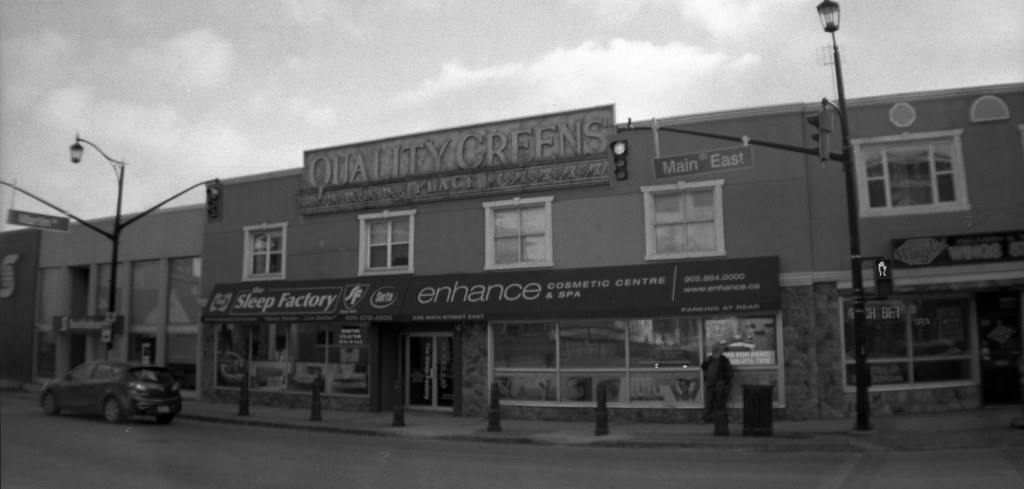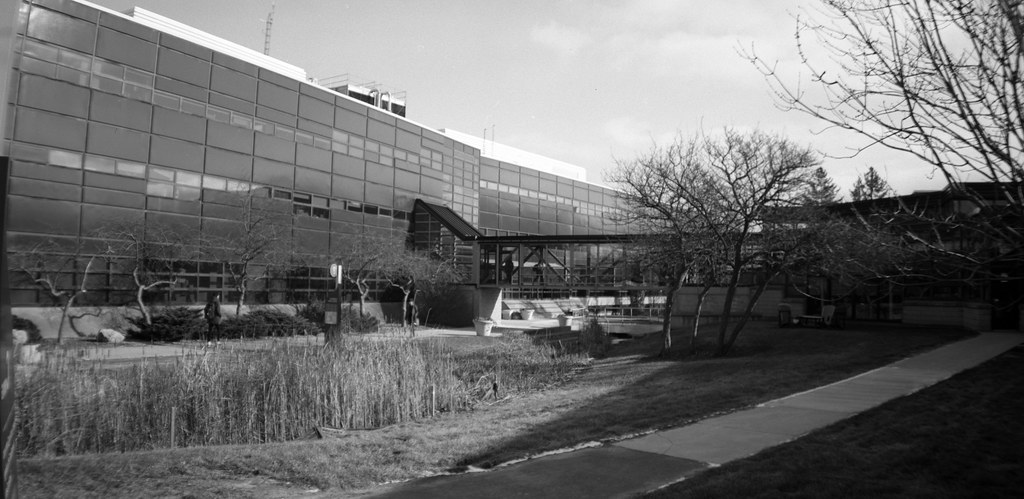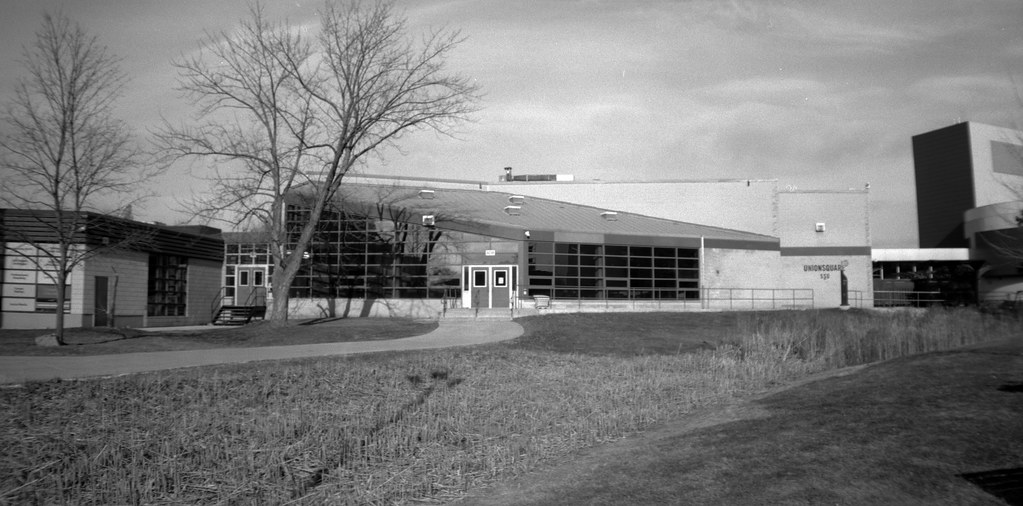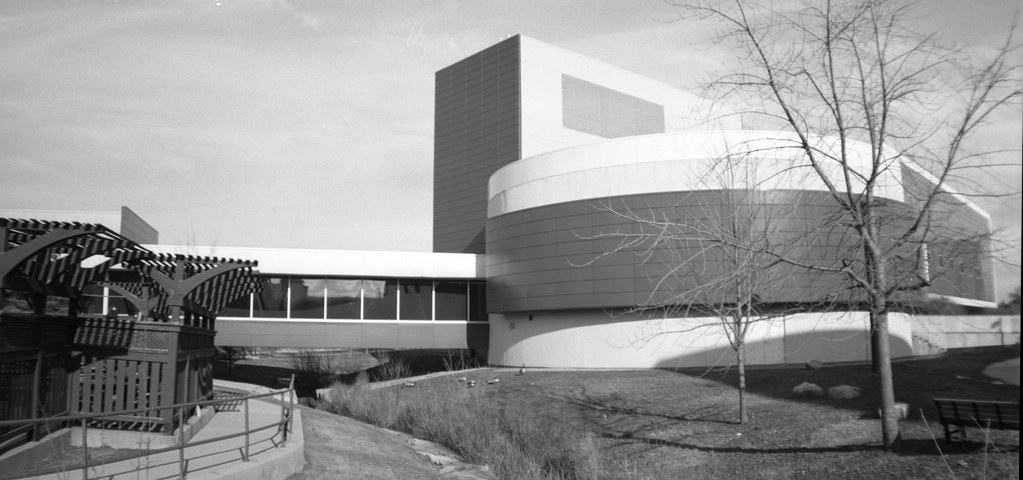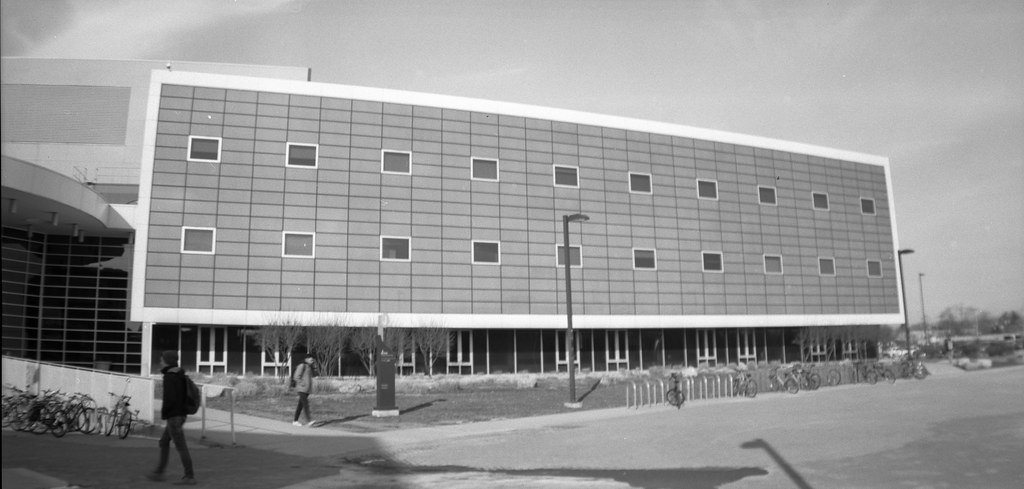If you’re a fan of the Polaroid Automatic Land Camera or old school pop-out folders, then the Lomography Belair X 6-12 will be a familiar camera. I’ll be referring to the camera as the Belair from now on. And while the Belair shares some design features of the Auto Land Camera, the two are very different cameras altogether. The Belair doesn’t try to be anything but a fun camera that sits nicely on the edge of being a toy camera. A fairly simplistic camera, but has one thing that drew me in, the giant 6×12 panoramic images and the interchangeable lens. Special thanks to Angela Solis for loaning this beauty out.
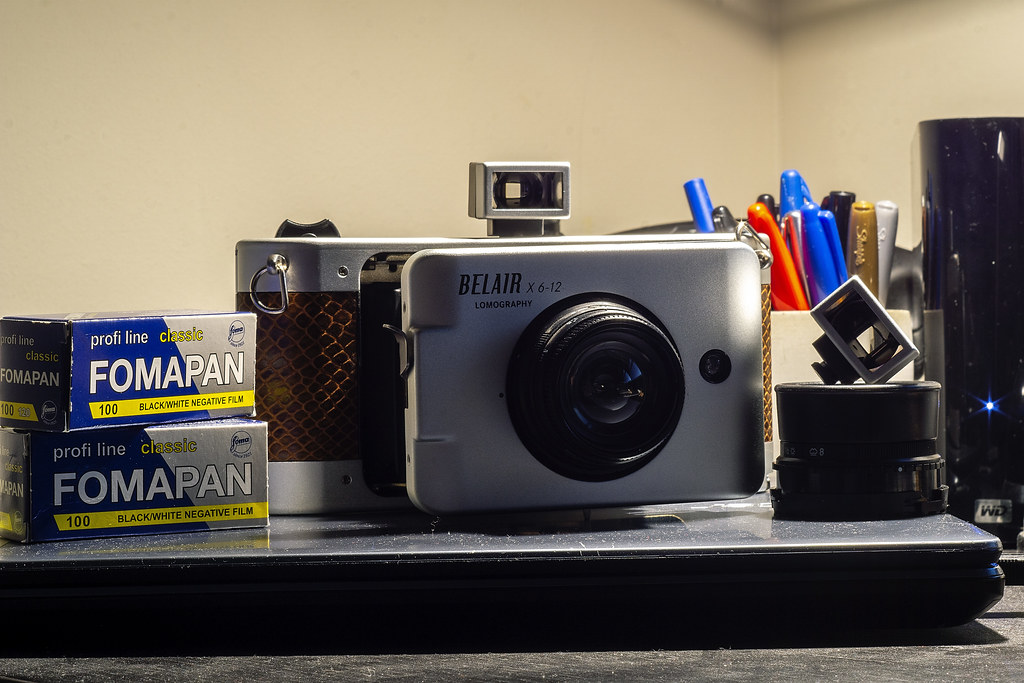
Camera Specifications
Make: Lomography
Model: Belair X 6-12 (Globe Trotter)
Type: Point and Shoot
Format: Medium (120, 6×6/6×9/6×12)
Lens: Interchangeable, Belair Mount
Year of Manufacture: 2011
Camera Feel
The first thing I noticed about the camera is how well balanced it is, with the pop-out front standard and the larger rear portion with the bellows, never once did I feel that the camera was dropping in the hand. Further establishing it as a near cousin of the Polaroid Auto Land Cameras. The particular model of the Belair I used is the Globe Totter, which meant I had one with metal construction, but it did little to add any weight to the camera, in fact, I was glad to have the extra strength than say something more plastic. Speaking of plastic, the camera comes stock with small low-profile, lenses, anything bigger might cause an imbalance in the camera feel. The layout of the controls is okay, but not the best. The camera has two simple controls, a shutter released, mounted on the front standard and an ISO control knob. The ISO knob is pretty small and easy to miss, thank goodness I study these cameras closely before taking them out for a spin, so I was able to set the right film speed. Now the shutter release, Lomography would have done well to place the release button on the back standard than on the front, which if you aren’t careful could cause undue camera shake at slower shutter speeds. The lens features a two-aperture click-stop and a standard focus scale (non-coupled) so either set it to f/16 and don’t let things worry you, or use an external rangefinder.
Camera Experience
I enjoyed shooting the camera, but you have to be smart about it, remembering that you only have a choice of two apertures (f/8 or f/16) and that goes for both the standard plastic and the premium glass lenses. So pick your film based on the light conditions or go ahead and do some pushing. Exposure is controlled through an electric eye so it is a bit off sometimes, I lost a couple of exposures because they were blown out. The placement of the shutter release and guesstimate focus also had some poor results in the end. But when you nailed everything, there was certainly something. Now the camera allows you to shoot in three formats, 6×6, 6×9, and 6×12. Having plenty of the first two went to the full 6×12, which made life a little bit more interesting. Thankfully swapping out the masks was easy, but advancing using 6×12 is what makes life harder, you have to start at exposure 2, then advance to 4, 6, 8, 10, and 12. So you get about six exposures per roll, and it makes scanning difficult because, on the standard Epson mask, you have to scan two exposures at a time and cut the roll down a lot. Not to mention, the film advance seemed to slip past the numbers, and while I didn’t have crowding of my exposures it did throw me off a bit, and unless you get the tension just right, you’ll get a fat roll.
Optics
Let’s talk lenses; the Belair has the option of using four lenses. Now the mount is a proprietary ‘Belair’ mount so you can’t throw on or adapt another lens you have in your kit. In the box you get plastic lenses, which are nothing to sneeze at, the images I got from the plastic lenses were exactly what I expected them to be. While they were sharp to a point of being plastic, the images had a softness about them. What is fun about it is the fact you can swap out the lenses, you have a ‘standard’ 90mm lens and a 58mm ultrawide (which in 35mm territory with a 6×12 frame is approximately 21mm). The lenses each comes with a swappable viewfinder to help compose the images. But you can also get Zenit made glass lenses in the same focal lengths and aperture ranges. How much these add to your images, I’m unsure of, but the problem is that these lenses stand out further, which as I stated earlier would throw off the balance of the camera.
The Lowdown
I’m on the fence about the Belair, I had a lot of fun shooting with the camera, but I think if I had one of my own the novelty of it would wear off pretty quick. They can be pricey, even on sale, and when you start to add on glass lenses, the price goes up. So I won’t flat out recommend the camera, but I certainly will say that if you’re into the whole Lomography thing and love ultra-wide panoramic formats but can’t spend the cash on a Fuji GW or GSW690 or a 617 then try out the Belair before you buy. It’s fun, I love the wide panoramic images that it produced, but it just isn’t my cup of tea.
All Photos Taken in Milton & Oakville, Ontario, Canada
Lomography Belair X 6-12 – Lomography Belair X 6-12 1:8 58mm – Fomapan 100 @ ASA-100
Blazinal (1+50) 9:00 @ 20C


